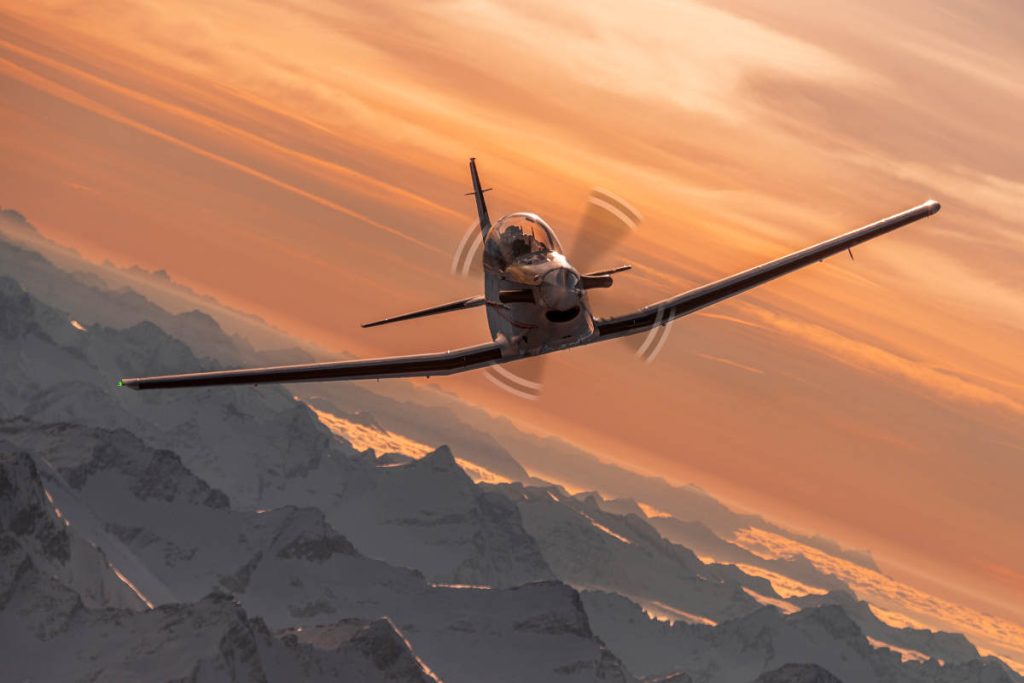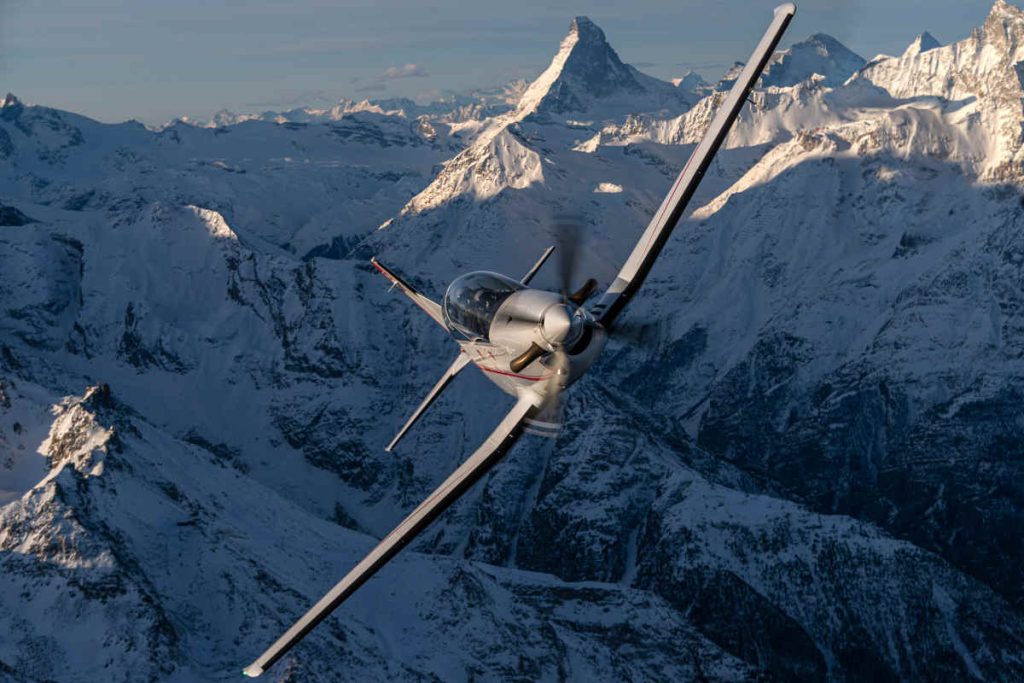
Features
Avionics
Training
Pilatus displays PC-7 MKX trainer in Dubai
November 15, 2021 By Wings Staff
 The Pilatus PC-7 MKX uses conventional semi-monocoque construction for the wing, fuselage and empennage. (Photo: Pilatus)
The Pilatus PC-7 MKX uses conventional semi-monocoque construction for the wing, fuselage and empennage. (Photo: Pilatus) Pilatus for the first time on November 15 unveiled in public its PC-7 MKX aircraft, focused on the training market, in the static display area at Dubai Air Show 2021. The company explains the PC-7 MKX, with a new glass cockpit and avionics, among technical advances, holds a range of innovations for the training sector. Pilatus describes the aircraft as the “smart Basic Trainer” targeting air forces around the world.
Pilatus reports positive 2021 financial year
The cockpit of the PC-7 MKX is centred on a three-display philosophy utilizing what Pilatus describes as the next generation of high definition screens. This provides students with an easy entry into the world of modern avionics, explains Pilatus, while practciing vital pilot skills using a proven airframe with benign and forgiving flying characteristics. The PC-7 MKX can be used to train a range of aircrew.
The PC-7 MKX’s avionics suite provides flexibility for use in a variety of training missions. It is designed as a comprehensive baseline configuration with various add-on options such as synthetic vision system, traffic advisory system, autopilot, cockpit camera and mission debriefing system to meet specific training needs.
The cockpit features a large primary flight display and, explains Pilatus, multi-function displays to give students exposure to the technology found in today’s frontline assets. The primary flight display allows selection of various flight modes, with the left and right displays featuring a moving map for navigation, a Flight Management System and an Engine Indicating and Crew Alerting System.

The PC-7 MKX’s avionics suite is designed for flexibility with various add-on options. (Photo: Pilatus)
Pilatus explains the design of the PC-7 MKX uses conventional semi-monocoque construction for the wing, fuselage and empennage. The primary structure is built of aluminium alloy sheet and extrusion. Combined with precision workmanship, explains the company, these features provide a high degree of interchangeability as well as easy replacement of parts. The PC-7 MKX is built to deliver a lifecycle of at least 30 years.